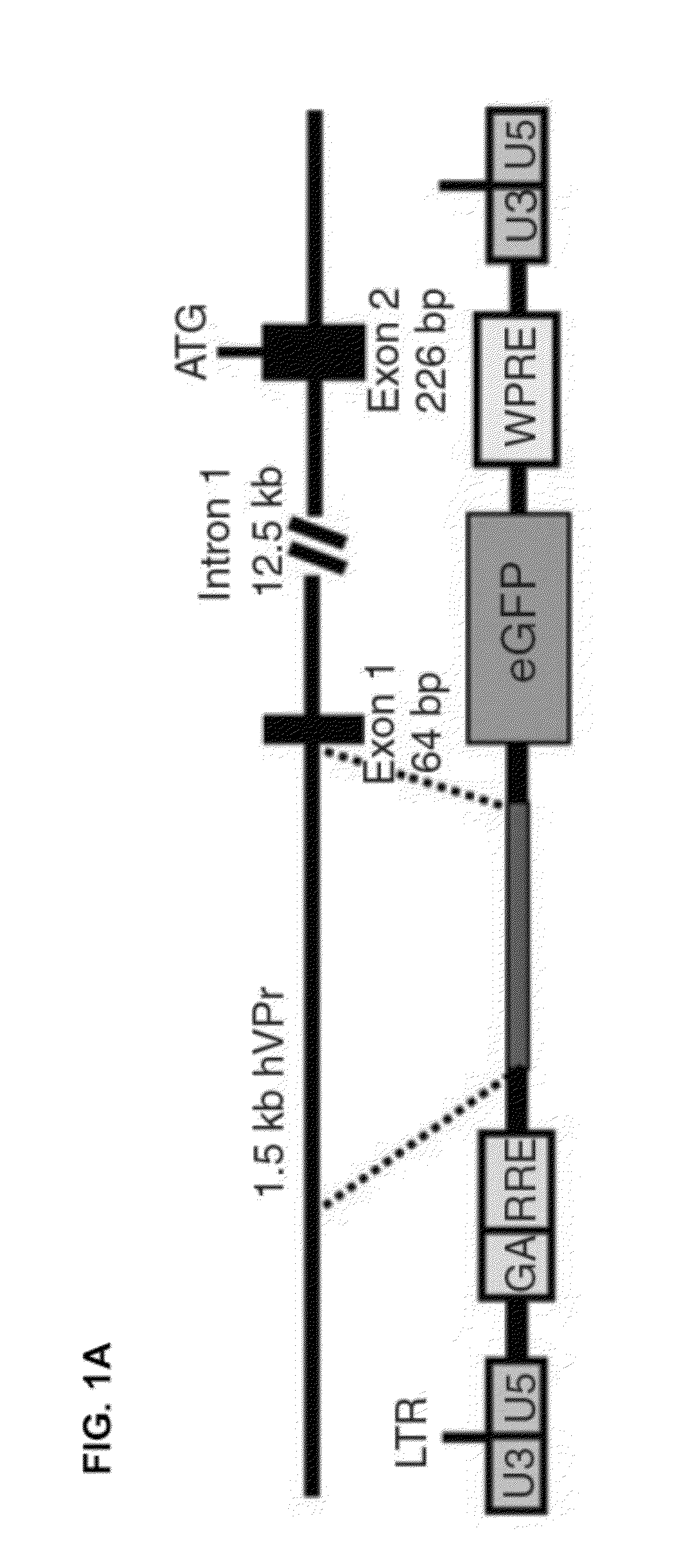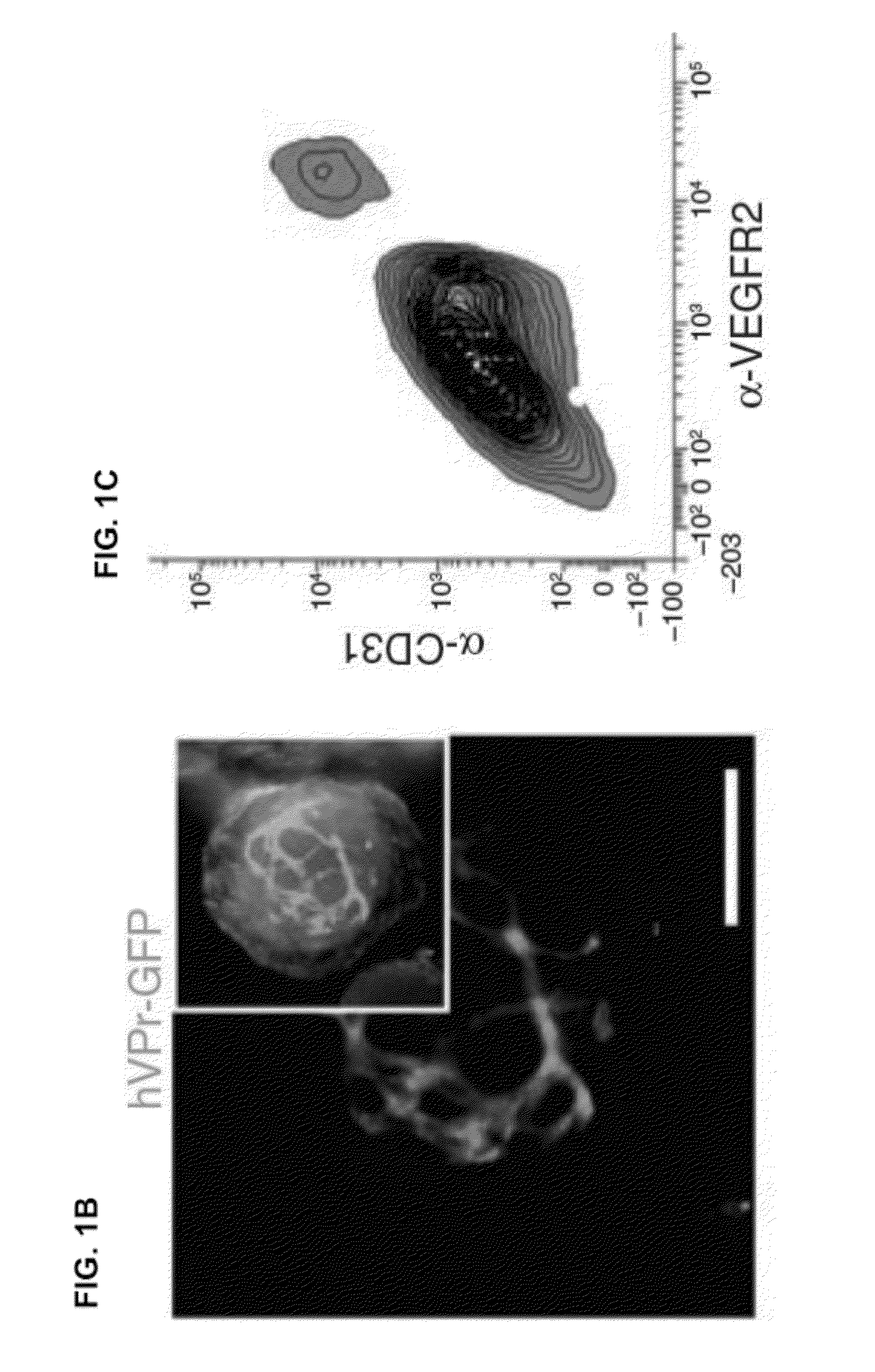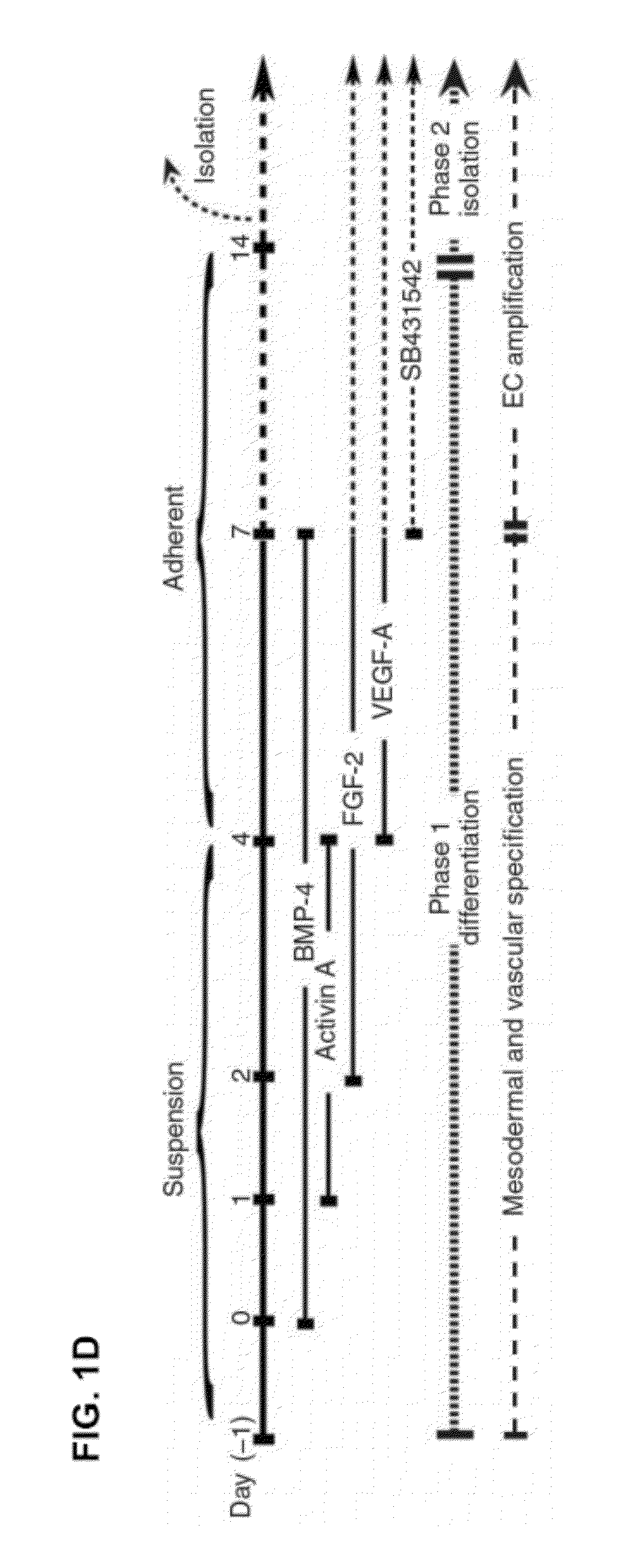Methods for developing endothelial cells from pluripotent cells and endothelial cells derived
a technology of endothelial cells and pluripotent cells, which is applied in the field of human endothelial cell generation, can solve the problems of insufficient identification of specific developmental stimuli in cells, lack of cell intrinsic genetic labeling tools for ec-specific lineage tracing, and insufficient cell exposure to specific developmental stimuli
- Summary
- Abstract
- Description
- Claims
- Application Information
AI Technical Summary
Benefits of technology
Problems solved by technology
Method used
Image
Examples
example 1
General Methods
[0079]Human ESC Culture
[0080]The experiments delineated here were performed primarily with the recently approved RUES1 hESC (kindly provided by Dr. Ali Brivanlou (James et al., Dev. Biol. 295: 90-102 (2006)) and corroborated using WMC2, WMC7, WMC8, which were hESC lines generated at Weill Cornell Medical College (kindly provided by Dr. Zev Rosenwaks / Dr. Nikica Zaminovic), H9 (Id1-YFP, kindly provided by Dr. Robert Benezra / Hyungsong Nam and Dr. Lorenz Studer / Dr. Mark Tomishima), and IPSc (kindly provided by Dr. Studer / Dr. Gabsang Lee). Human ESC culture medium consisted of Advanced DMEM / F12 (Gibco) supplemented with 20% Knockout Serum Replacement (Invitrogen), 1× ential amino acids (Gibco), 1× L-Glutamine (Invitrogen), 1× Pen / Strep (Invitrogen), 1×βMercaptoethanol (Gibco), and 4 ng / ml FGF-2 (Invitrogen). Human ESCs were maintained on Matrigel™ using hESC medium conditioned by mouse embryonic fibroblasts (MEF, Chemicon).
[0081]Embryoid Bodies
[0082]Human VPr-GFP hESCs wer...
example 2
Generation of hESC Lines Expressing Green Fluorescent Protein Under Control of the Promoter for the Human VE-Cadherin Gene
[0097]To detect the emergence of ECs from differentiating hESCs in real-time, a cell line for EC-specific lineage tracing was generated. A 1.5 kilobase fragment (SEQ ID NO: 9) was isolated from a bacterial artificial chromosome (BAC) containing the human VE-cadherin genomic locus. The promoter sequence for this EC-specific gene, encompassing a region upstream of exon 1, was inserted into a lentiviral-vector upstream of GFP (hVPr-GFP) (FIG. 1A).
[0098]Ordinarily, if a constitutively expressed means of positive selection is absent from the vector, cells in which viral integration has occurred cannot be readily distinguished from non-transduced cells, as the tissue specific reporter contained within the lentiviral vector is expected to be expressed only in specific differentiated derivatives. A protocol that utilized lentiviral vectors without constitutively expresse...
example 3
Generation of an Id1 hESC Reporter Line
[0102]A bacterial artificial chromosome (BAC) was modified in order to place yellow fluorescent protein (YFP) under control of the endogenous human Id1 promoter locus. This reporter construct was electroporated into the H9 hESC line, selected for BAC integration using antibiotic resistance and subcloned. Clones were assessed and selected based on expression of YFP in Id1 hESC derivatives following spontaneous differentiation.
PUM
| Property | Measurement | Unit |
|---|---|---|
| time | aaaaa | aaaaa |
| concentration | aaaaa | aaaaa |
| concentration | aaaaa | aaaaa |
Abstract
Description
Claims
Application Information
 Login to View More
Login to View More - R&D
- Intellectual Property
- Life Sciences
- Materials
- Tech Scout
- Unparalleled Data Quality
- Higher Quality Content
- 60% Fewer Hallucinations
Browse by: Latest US Patents, China's latest patents, Technical Efficacy Thesaurus, Application Domain, Technology Topic, Popular Technical Reports.
© 2025 PatSnap. All rights reserved.Legal|Privacy policy|Modern Slavery Act Transparency Statement|Sitemap|About US| Contact US: help@patsnap.com



